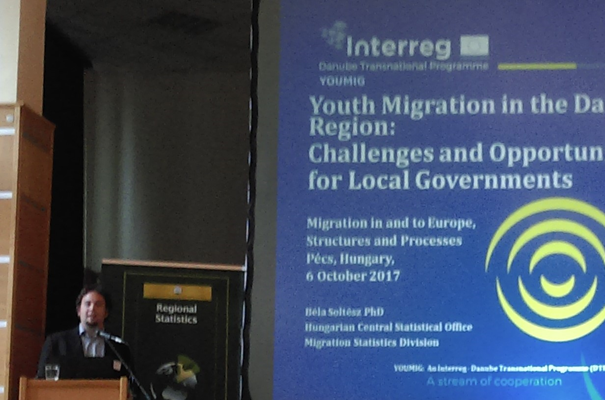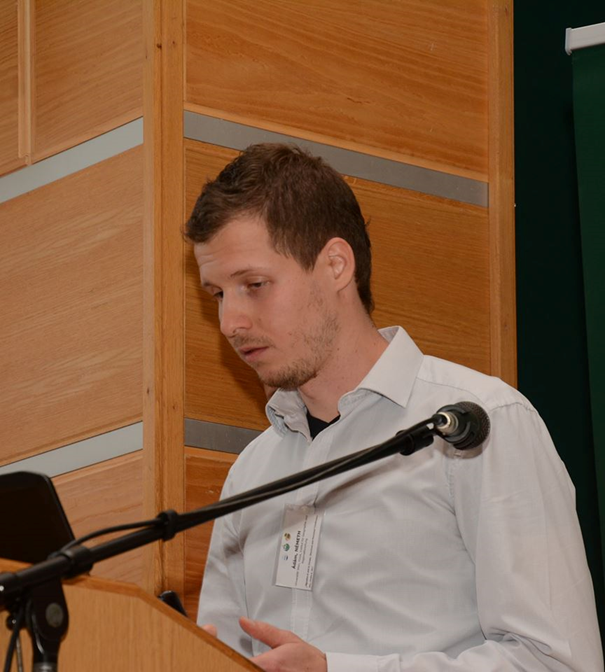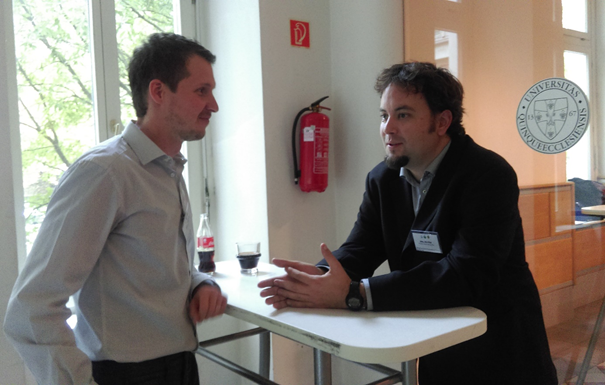YOUMIG - Project aims linked to migration research at conference
11-10-2017
The conference ’Migration in and to Europe, Structures and Processes’ held in Pécs, Hungary, on 6 October 2017, featured a presentation of the aims and research milestones of the YOUMIG project by Deputy Project Manager Béla Soltész. The conference was jointly sponsored by the Hungarian Central Statistical Office, the Doctoral School of Earth Sciences of the University of Pécs and the Regional Statistics Journal.

In his presentation entitled ‘Youth Migration in the Danube Region: Challenges and Opportunities for Local Governments’, Soltész highlighted how this focused, policy-oriented, local development-centred project can offer connection points to other research being carried out on migration in the region. Soltész showed some slides with maps and graphs produced in the framework of the SEEMIG project (2012-2014), which was in many ways a predecessor to YOUMIG. He mentioned that research findings in the Danube region (and in the South East European region which was SEEMIG’s focus area) tend to turn our attention towards the following factors which have implications for people migrating in the 2010s:

- Aging population;
- Low wages;
- Overwhelmed social sector;
- Area of free movement (EU) built/expanded;
- Huge regional disparities;
- Young people considering moving abroad;
- Local governance lacking capacities to address the needs and challenges.
The focus of YOUMIG is to help build the lacking local capacities to respond to collective negative effects (like demographic loss, brain drain etc.) through channelling the individual positive effects (new knowledge, skills, wealth gained) of youth migration into local development.
Another YOUMIG researcher, Ádám Németh from the University of Vienna also gave a presentation at the conference, and shared some results of his earlier work, exploring the concepts of migration and diversification and the relationship between them. After putting European migration trends into a global context, Németh presented a method that can be used to measure ‘diversity’ and ‘cultural distances’, and applied this complex method to analysing the spatial diversification patterns of European countries.
Attending the conference gave a good opportunity for the two researchers to discuss YOUMIG goals and linking migration research to project implementation as well.

The conference programme started with an overview of the subject and setting-of-the-scene by El Mouhoub Mouhoud of the University of Paris-Dauphine, who highlighted paradoxes and deadlocks in international migration processes. Other contributors included Alessandra Faggian, Research Director of GSSI Social Sciences, who discussed the labour market positions of recently-arrived immigrants in Sweden, and Birgit Glorius, from Chemnitz Technical University, who in a Skype-call appearance shared with the audience her ideas on migration-related structures, processes and discourses through the example of Germany.
